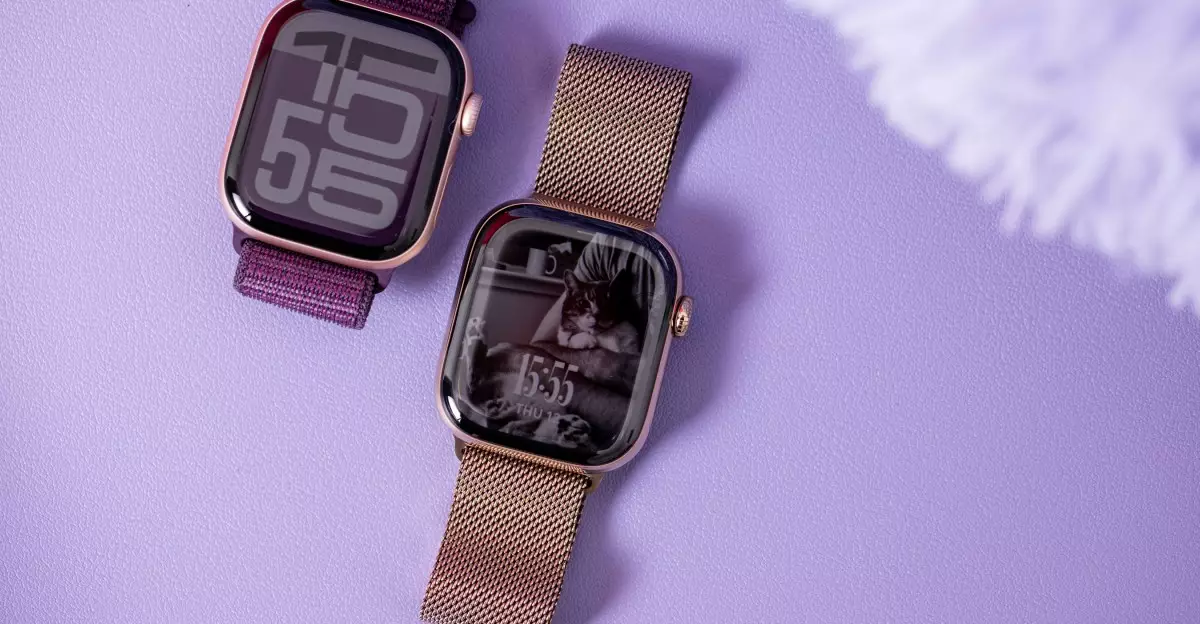In an era defined by innovation and connectivity, Apple’s commitment to integrating artificial intelligence into their wearable devices signals a notable shift in consumer technology. As outlined by Bloomberg’s Mark Gurman, Apple is not merely adding features; it is aspiring to redefine the way we interact with our environment through enhanced AI capabilities. The plan to introduce camera-equipped wearables, including the Apple Watch and AirPods, by 2027 demonstrates Apple’s dedication to pushing the boundaries of wearable tech.
A Vision Beyond the Screen
The anticipated integration of cameras into the Apple Watch is particularly intriguing. Instead of being an external addition, these cameras are designed to occupy space within the display, a bold design choice that suggests Apple is prioritizing aesthetic and functional harmony. This approach not only emphasizes a sleek design but also hints at a user experience where technology seamlessly blends into daily life. The Apple Watch Ultra’s camera placement alongside the digital crown could redefine how users interact with their devices, making features like Visual Intelligence more intuitive.
Empowering Users with Visual Intelligence
The Visual Intelligence feature aims to elevate the utility of wearables, transforming mundane tasks into rich experiences. By providing context-aware information, the wearable could essentially act as a digital companion, enhancing instances like planning outings or organizing schedules. For instance, imagine attending an event and having your wearable automatically extract relevant details and populate your calendar. This level of interactivity could garner significant interest among users seeking both efficiency and innovation in their devices.
AI Models and the Future of Integration
What makes this endeavor incredibly ambitious is Apple’s goal to develop its own AI models to power these features. Currently, reliance on external AI systems may limit Apple’s control over the user experience, but by establishing in-house capabilities, they can tailor features to align better with their ecosystem. This pivot not only showcases Apple’s commitment to independence in AI development but also reflects a understanding of the growing importance of customization in technology.
Leadership and Vision for the Future
Mike Rockwell’s leadership marks a critical junction for Apple’s AI initiatives. As the mind behind Apple’s Vision Pro, Rockwell’s experience positions him perfectly to steer forthcoming AI developments. By focusing on enhancing Siri’s capabilities and accelerating the deployment of advanced AI models, his role could very well carve the path for other planned wearables, including potential AR glasses. The concept of AR is particularly enticing in the context of Apple’s ecosystem, offering a glimpse of how digital and physical realms could converge.
Apple’s aspirations for AI-powered wearables set a promising trajectory for the future. By merging cameras with sophisticated AI functionalities, Apple aims to create a line of devices that are not only tools for daily tasks but integral parts of a user’s life. The potential for a more engaging and responsive wearable experience is not just a dream—it’s a future that is rapidly approaching.

